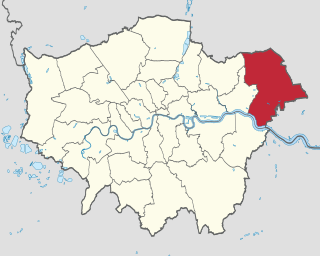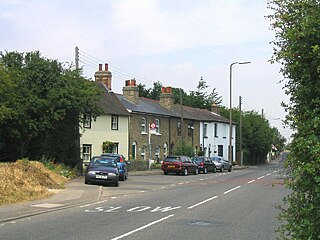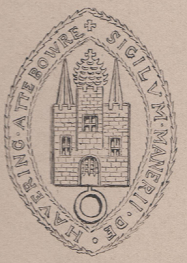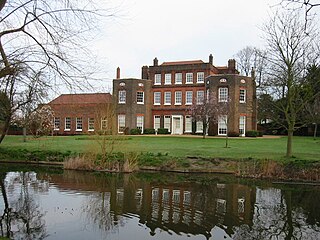| |||||||||||||||||||||||||
5 of 13 seats to the Hornchurch Urban District Council | |||||||||||||||||||||||||
|---|---|---|---|---|---|---|---|---|---|---|---|---|---|---|---|---|---|---|---|---|---|---|---|---|---|
| |||||||||||||||||||||||||
The fourth election to Hornchurch Urban District Council took place on 25 March 1929. The election was for 5 of 13 seats on the council.
| |||||||||||||||||||||||||
5 of 13 seats to the Hornchurch Urban District Council | |||||||||||||||||||||||||
|---|---|---|---|---|---|---|---|---|---|---|---|---|---|---|---|---|---|---|---|---|---|---|---|---|---|
| |||||||||||||||||||||||||
The fourth election to Hornchurch Urban District Council took place on 25 March 1929. The election was for 5 of 13 seats on the council.
In 1929 five of the seats were up for re-election: [1]
Davis (elected 1927), Bratchell (1926), Lambert (1926) and Stanton (1927) sought re-election. Stanton was the only nomination for South Hornchurch and was therefore elected unopposed.
The results were as follows:
| Party | Candidate | Votes | % | ±% | |
|---|---|---|---|---|---|
| Independent | F. H. R. Davis | ||||
| Independent | R. C. Russell | ||||
| Independent hold | Swing | ||||
| Party | Candidate | Votes | % | ±% | |
|---|---|---|---|---|---|
| Ratepayers | E. G. Bratchell | ||||
| Labour | B. L. Tarr | ||||
| Ratepayers hold | Swing | ||||
| Party | Candidate | Votes | % | ±% | |
|---|---|---|---|---|---|
| Labour | E. Lambert | ||||
| Ratepayers | E. J. Legg | ||||
| Independent | H. Lomas | ||||
| Labour | J. W. Matthews | ||||
| Ratepayers | J. Matthews | ||||
| Labour hold | Swing | ||||
| Ratepayers hold | Swing | ||||
| Party | Candidate | Votes | % | ±% | |
|---|---|---|---|---|---|
| Labour | W. Stanton | Unopposed | |||
| Labour hold | Swing | ||||

Hornchurch is a suburban town in East London in the London Borough of Havering. It is located 15.2 miles (24.5 km) east-northeast of Charing Cross. It comprises a number of shopping streets and a large residential area. It historically formed a large ancient parish in the county of Essex that became the manor and liberty of Havering. The economic history of Hornchurch is underpinned by a shift away from agriculture to other industries with the growing significance of nearby Romford as a market town and centre of administration. As part of the suburban growth of London in the 20th century, Hornchurch significantly expanded and increased in population, becoming an urban district in 1926 and has formed part of Greater London since 1965. It is the location of Queen's Theatre, Havering Sixth Form College and Havering College of Further and Higher Education.

Romford is a large town in East London, England, 14 miles (23 km) northeast of Charing Cross. Part of the London Borough of Havering, the town is one of the major metropolitan centres of Greater London identified in the London Plan.

Upminster is a suburban town in East London, England, within the London Borough of Havering. Located 16.5 miles (26.6 km) east-northeast of Charing Cross, it is one of the locally important district centres identified in the London Plan.

The London Borough of Havering in East London, England, forms part of Outer London. It has a population of 259,552 inhabitants; the principal town is Romford, while other communities are Hornchurch, Upminster, Collier Row and Rainham. The borough is mainly suburban, with large areas of protected open space. Romford is a major retail and night time entertainment centre, and to the south the borough extends into the London Riverside redevelopment area of the Thames Gateway. The name Havering is a reference to the Royal Liberty of Havering which occupied the area for several centuries. The local authority is Havering London Borough Council. It is the easternmost London borough.

Dame Angela Eileen Watkinson, DBE is a British politician. She was Conservative Party Member of Parliament (MP) for Hornchurch and Upminster until 2017, and was first elected in 2001 to the earlier seat of Upminster, defeating Labour's Keith Darvill who had taken the seat from the Conservatives in 1997. She was re-elected with increased majorities in 2005 and 2010.

North Ockendon is the easternmost settlement of Greater London, England, and part of the London Borough of Havering. It is 18 miles (29 km) east-northeast of Central London and consists of a dispersed settlement within the Metropolitan Green Belt. It was historically an ancient parish in the county of Essex, which was abolished for civil purposes in 1936. North Ockendon is the only inhabited area in Greater London outside the M25 London Orbital Motorway. North Ockendon is north of South Ockendon, in Thurrock, Essex.

Havering, also known as Havering-atte-Bower, was a royal manor and ancient liberty whose area now forms part of, and gives its name to, the London Borough of Havering in Greater London. The manor was in the possession of the Crown from the 11th to the 19th centuries and was the location of Havering Palace from the 13th to the late 17th century. It occupied the same area as the ancient parish of Hornchurch which was divided into the three chapelries of Havering, Hornchurch and Romford.

Hornchurch was a borough constituency represented in the House of Commons of the Parliament of the United Kingdom. It elected one Member of Parliament (MP) by the first past the post system of election. At the 2010 general election parts formed the new seats of Hornchurch and Upminster; and Dagenham and Rainham.

Hornchurch was a local government district in southwest Essex from 1926 to 1965, formed as an urban district for the civil parish of Hornchurch. It was greatly expanded in 1934 with the addition of Cranham, Great Warley, Rainham, Upminster and Wennington; and in 1936 by gaining North Ockendon. Hornchurch Urban District Council was based at Langtons House in Hornchurch from 1929. The district formed a suburb of London and with a population peaking at 131,014 in 1961, it was one of the largest districts of its type in England. It now forms the greater part of the London Borough of Havering in Greater London.
Loughton in Essex, England, was an urban district from 1900 to 1933, when it became part of Chigwell Urban District until 1974, when Epping Forest District Council was created. Loughton Town Council was established in 1996. The Town Council consists of 22 Councillors representing seven wards, elected for a four-year term. The council adopted the designation Town Council just after its re-creation as a parish in 1996, and changed the title of its chairman to Town Mayor in 2004.

The third legislative council election to Madras Presidency after the establishment of dyarchical system of government by the Government of India Act, 1919, was held in November 1926. Justice party lost the election to Swaraj Party. However, as the Swaraja Party refused to form the Government, the Governor of Madras set up an independent government under the leadership of P. Subbarayan and with the support of nominated members.
Hylands Park is a public park in the London Borough of Havering in northwest Hornchurch, near to Romford. It is owned and managed by Havering London Borough Council and has Green Flag Award status.

Havering Residents Association (HRA) is a group of residents' associations and registered political party in London, England. It is active in the London Borough of Havering and as of 2023 forms a 21-councillor group on Havering London Borough Council. At the 2022 London borough council elections they were the largest party on Havering Council, largest elected residents group in London, and the fourth largest political party represented on all London borough councils. Not all residents groups in Havering are affiliated with the HRA, usually indicating this by standing as 'independent resident' candidates. In 2014 eight members of the Havering Residents Association group split off to form the East Havering Residents Group.
The 1964 Havering Council election took place on 7 May 1964 to elect members of Havering London Borough Council in London, England. The whole council was up for election and the council went into no overall control.
Elections to Liverpool City Council were held on 1 November 1929. After the election, the composition of the council was:
Elections to Liverpool City Council were held on 1 November 1928.
Elections to Liverpool City Council were held on 1 November 1926.
The first election to Hornchurch Urban District Council took place on 27 March 1926, ahead of the creation of the new urban district on 1 April 1926.
The second election to Hornchurch Urban District Council took place in April 1927. The election was for 6 of 13 seats on the council. The election increased the majority of the Ratepayers' Association on the council.
The third election to Hornchurch Urban District Council took place in April 1928. The election was for 4 of 13 seats on the council. The election increased the majority of the Ratepayers' Association on the council.